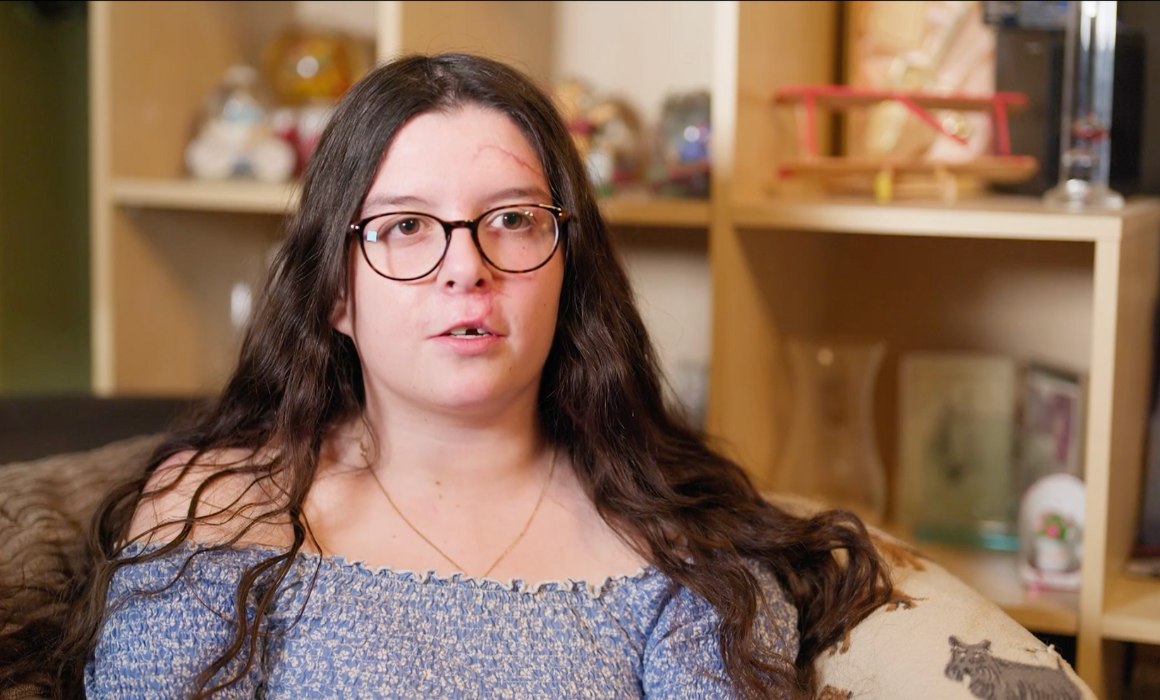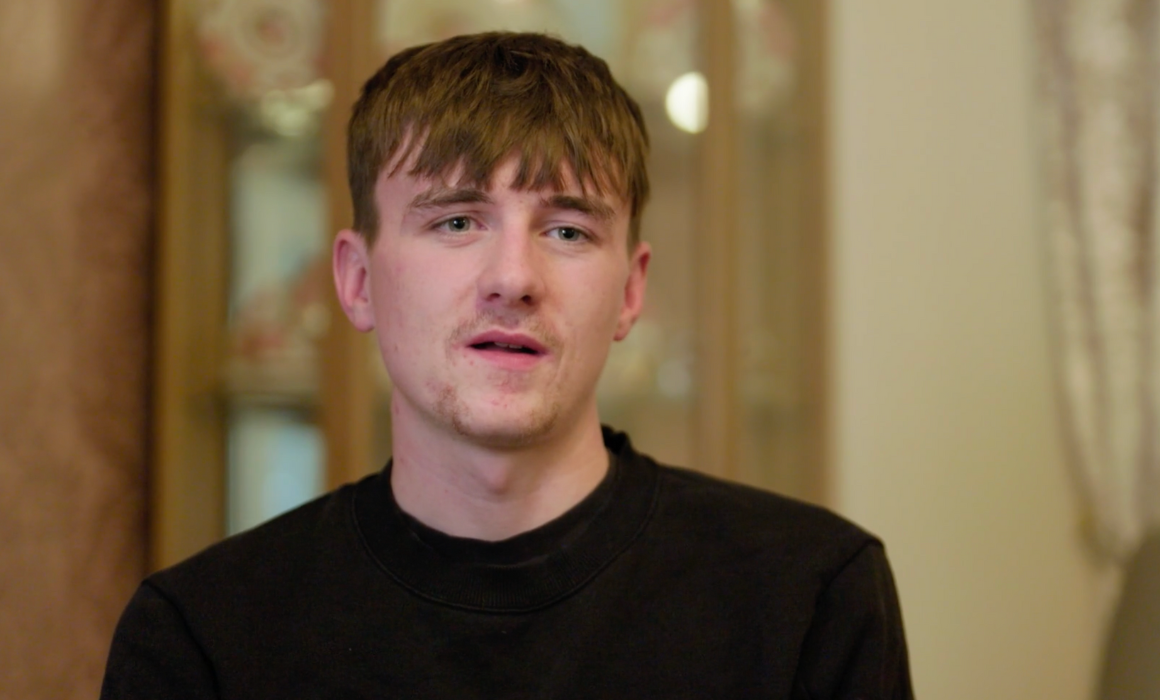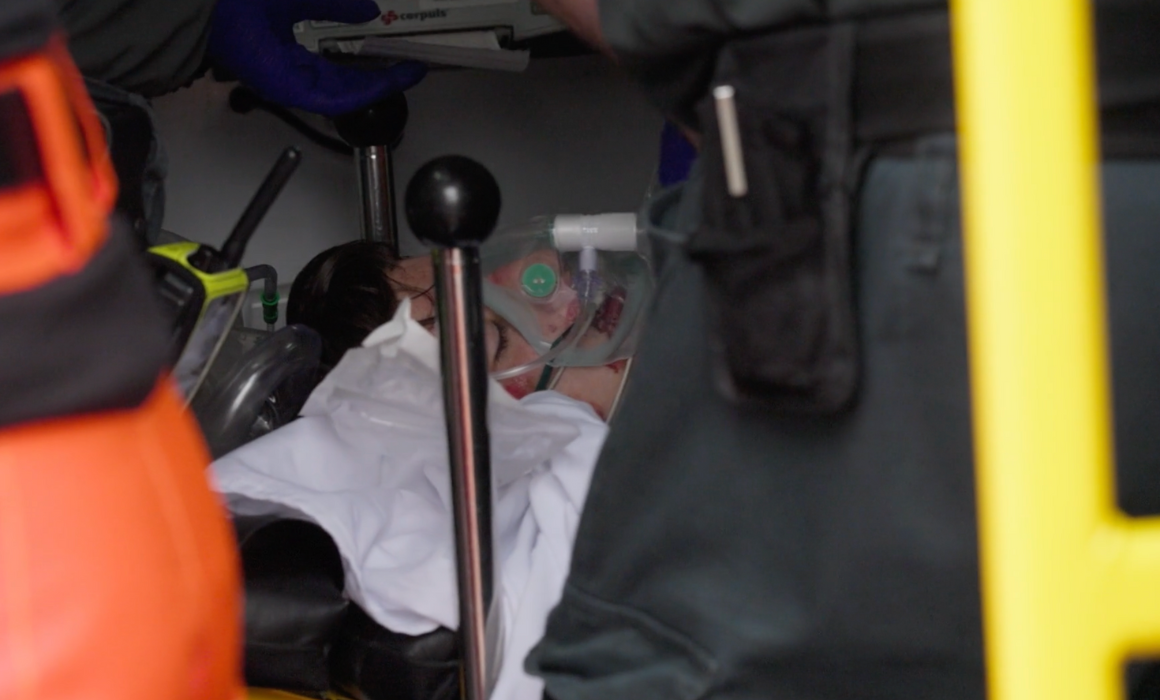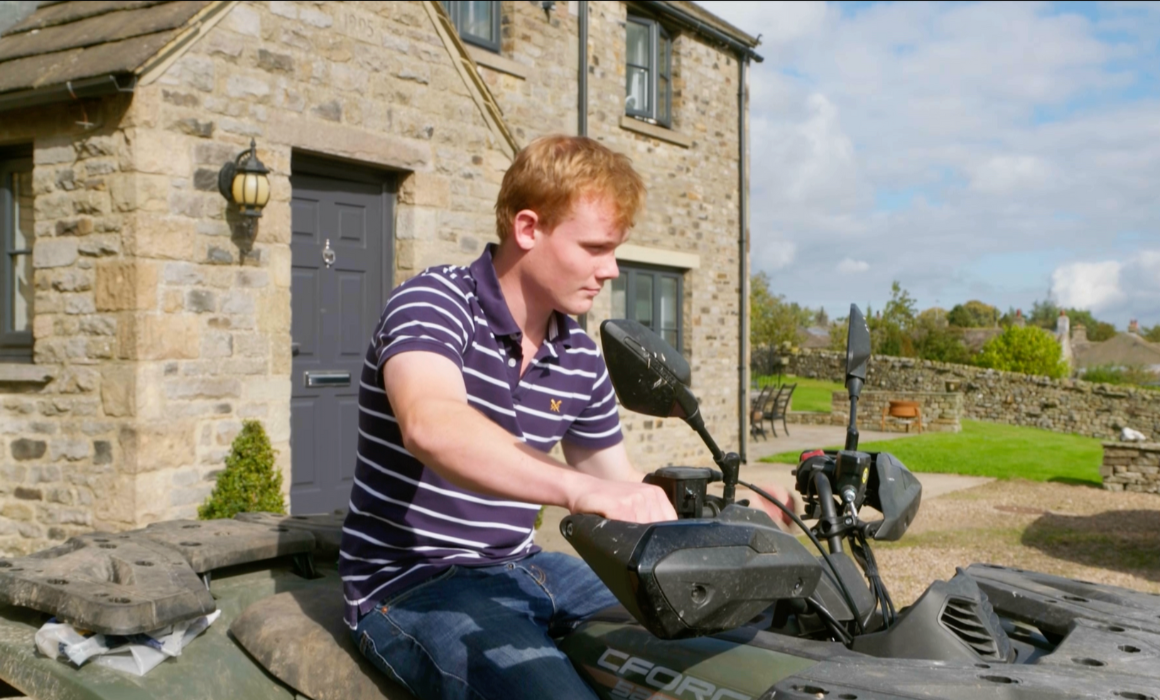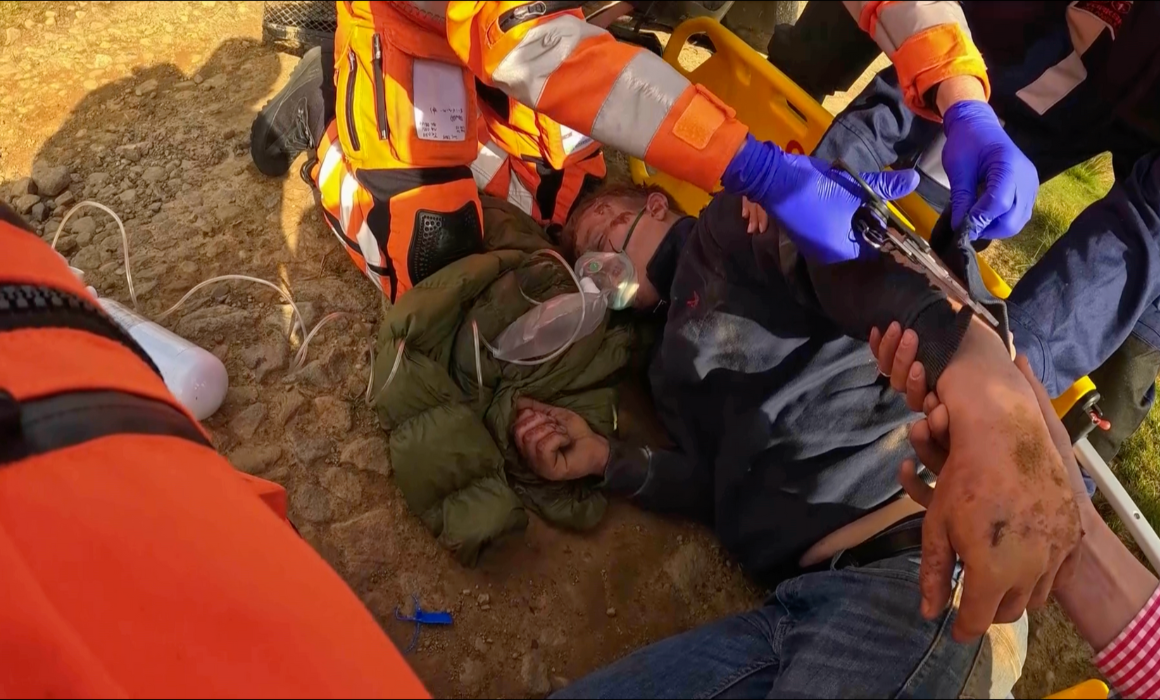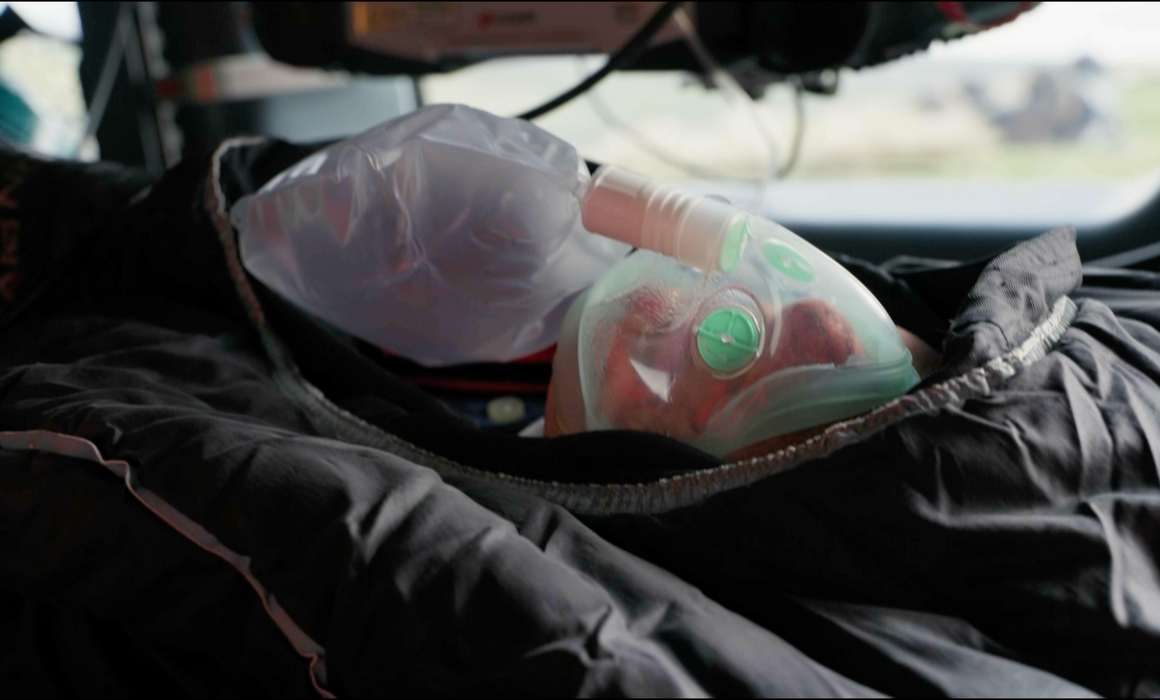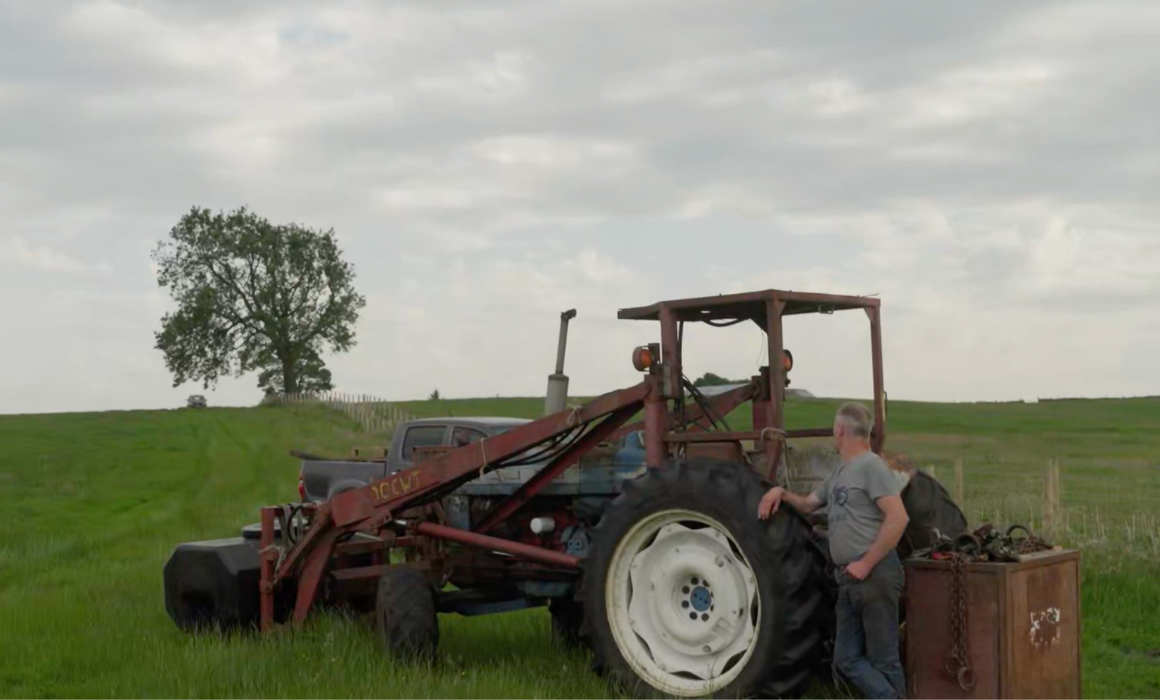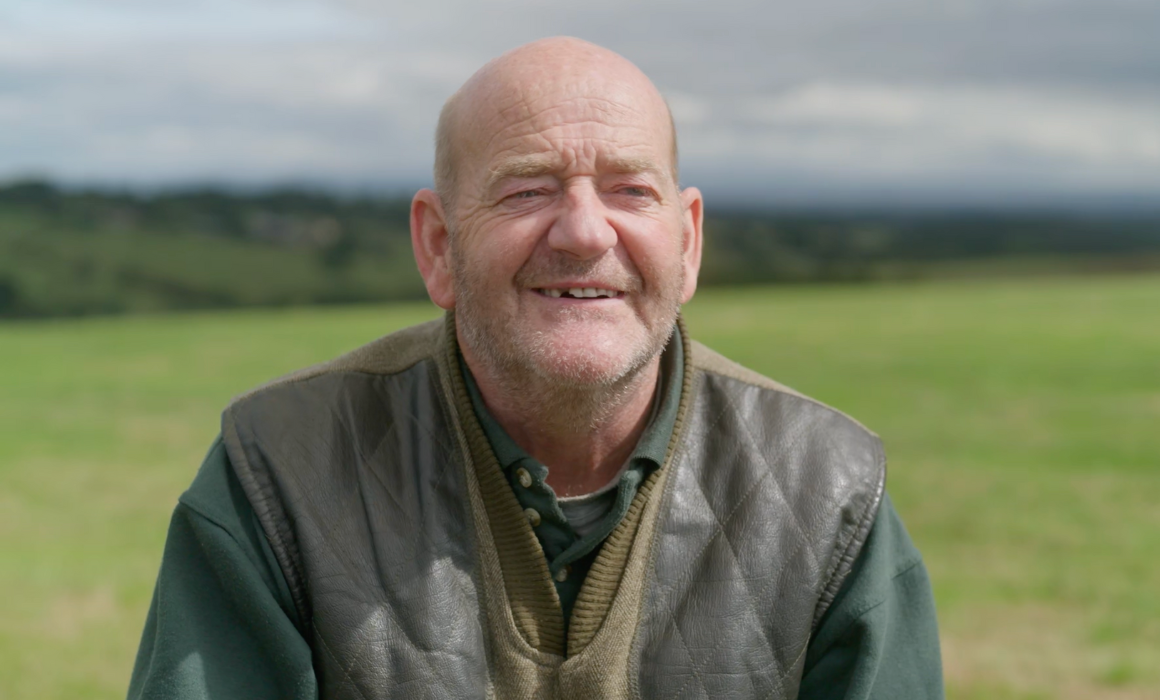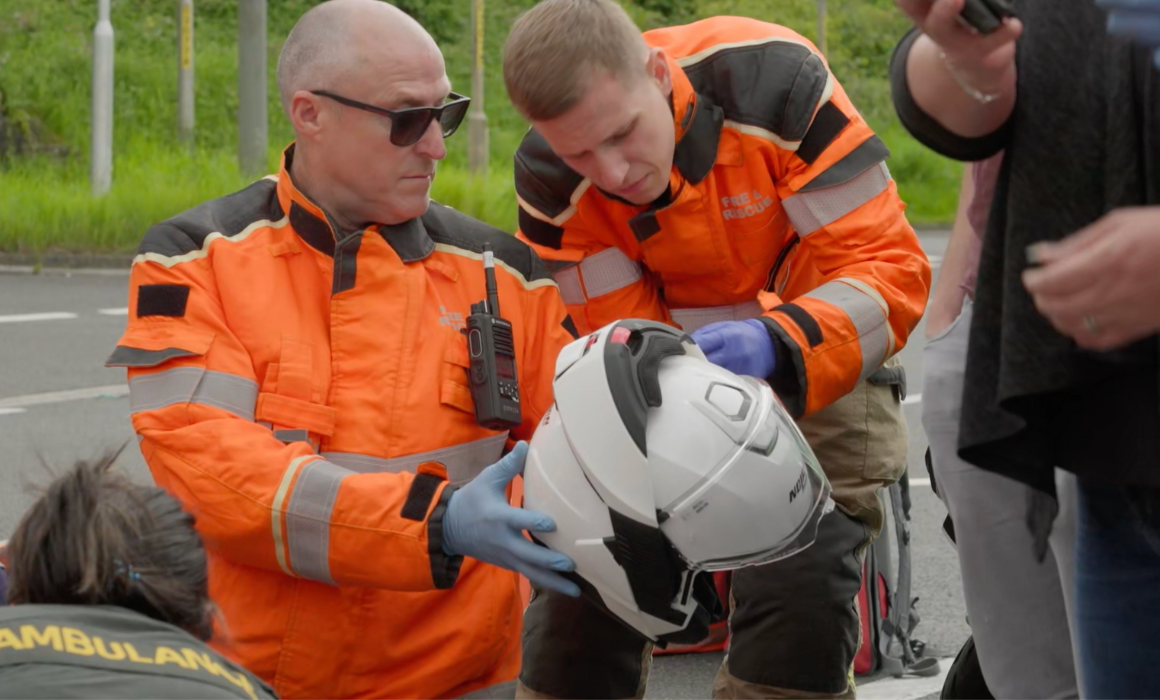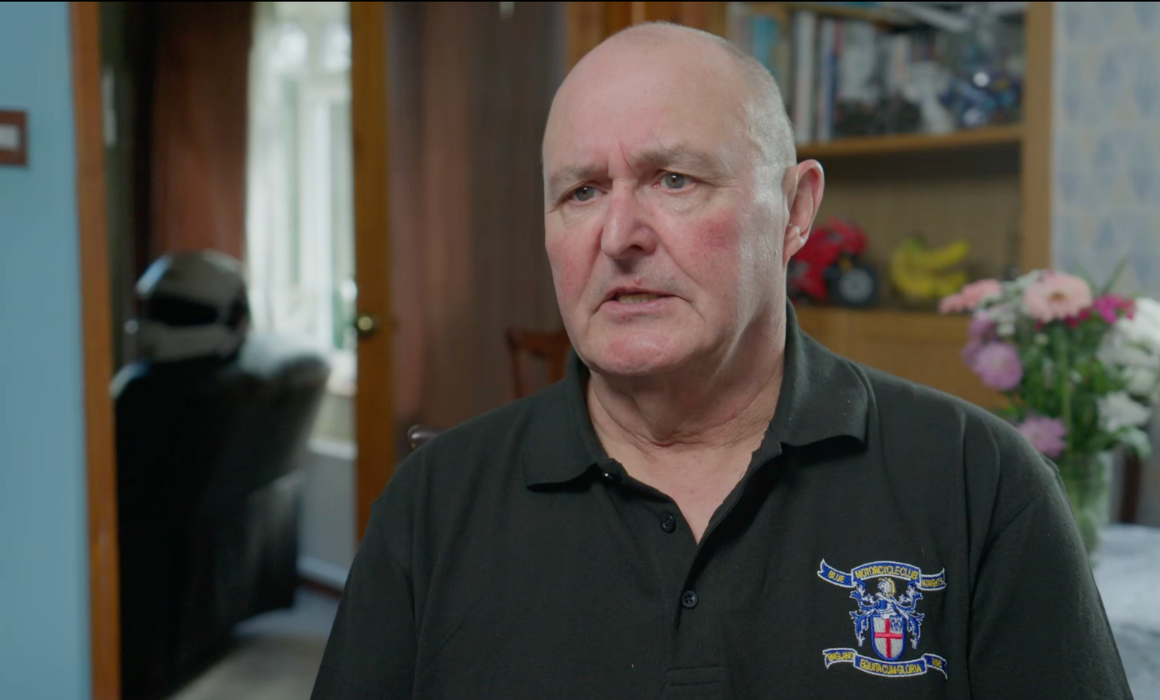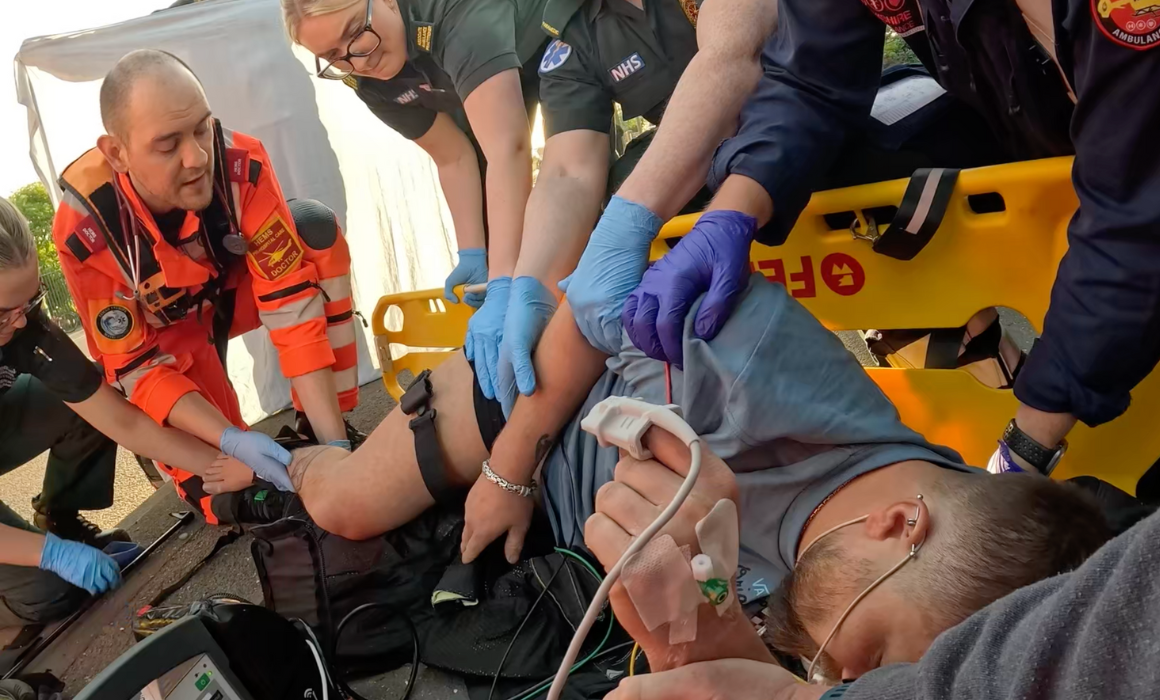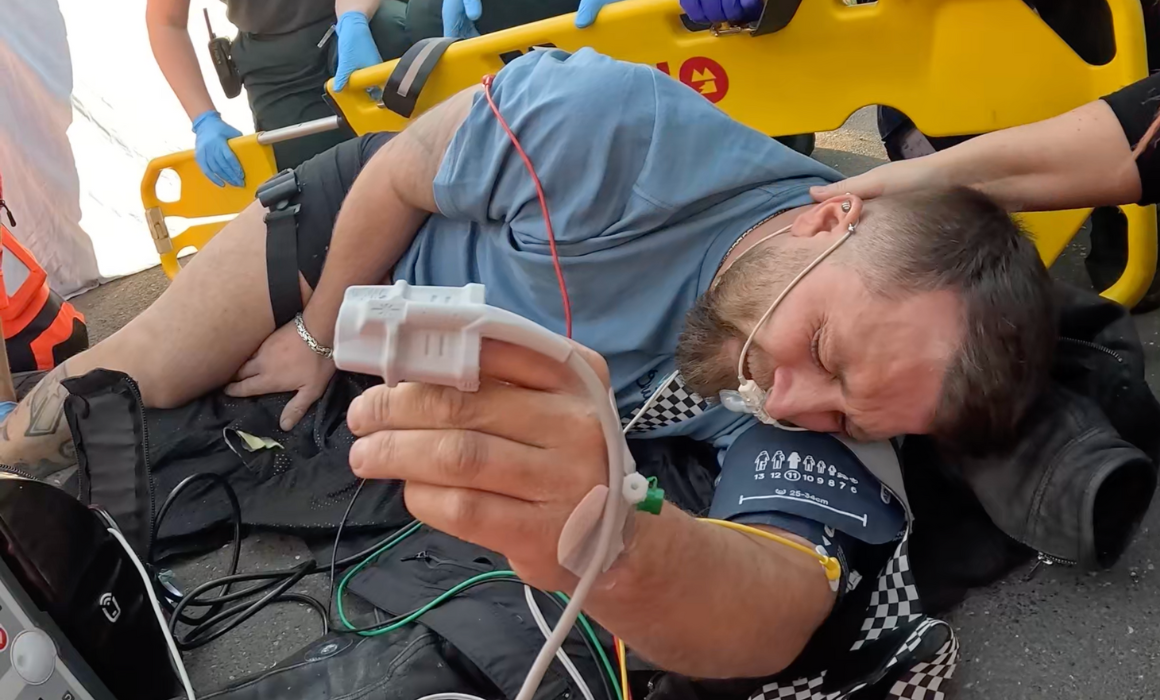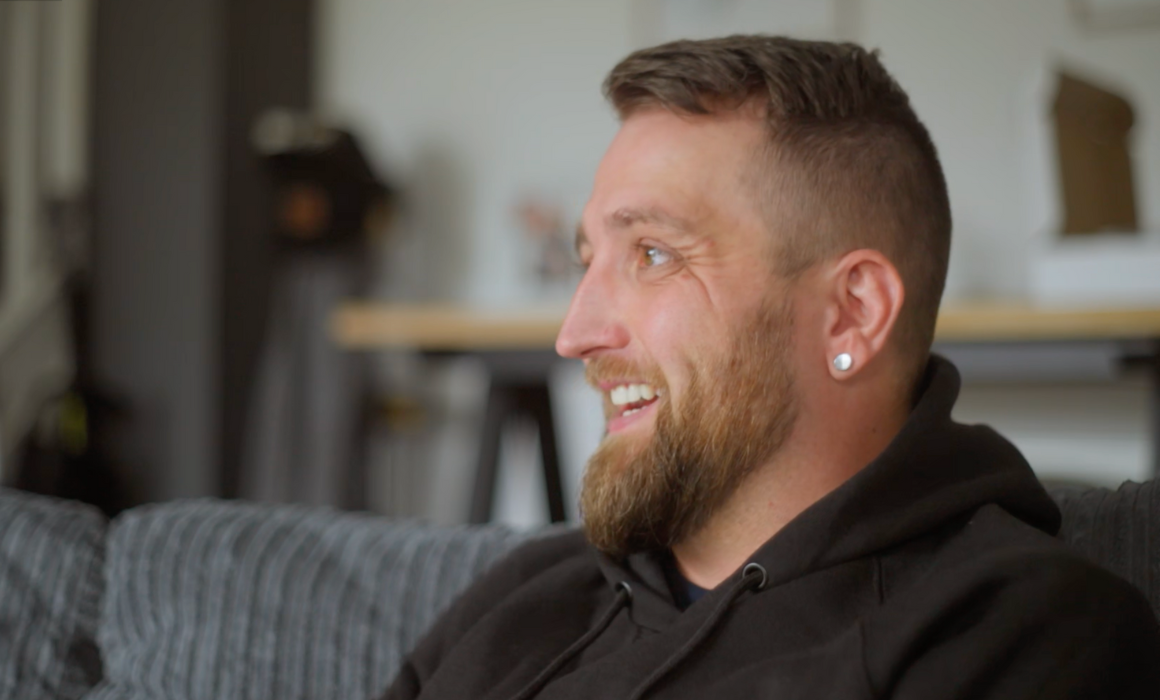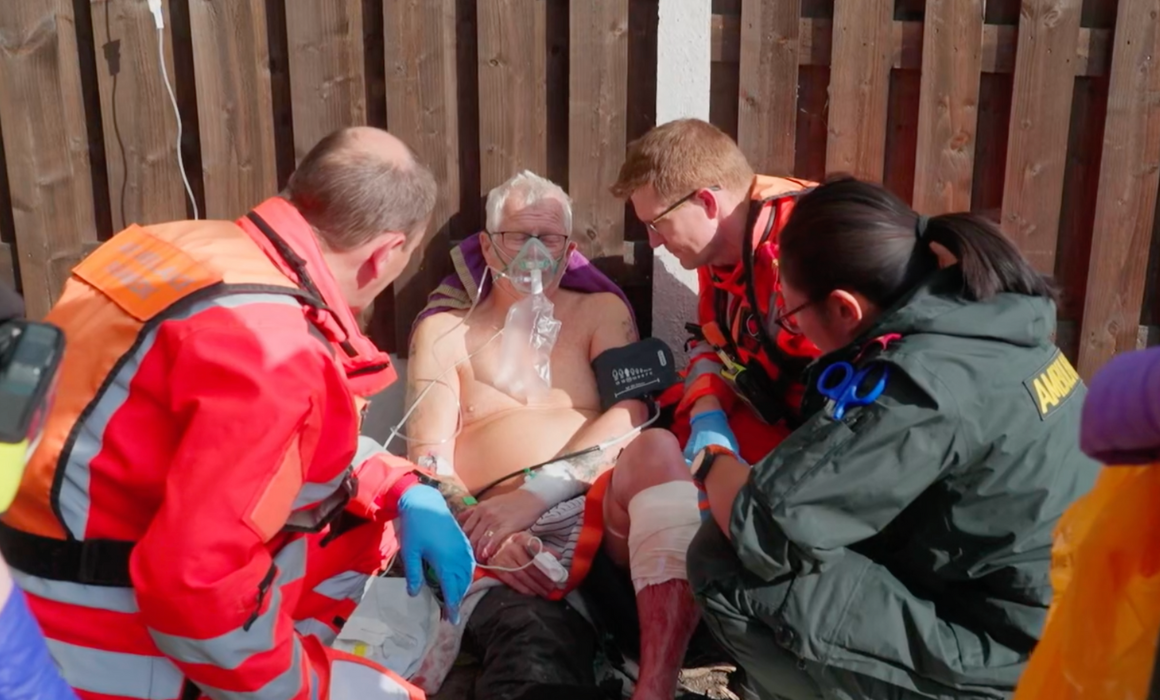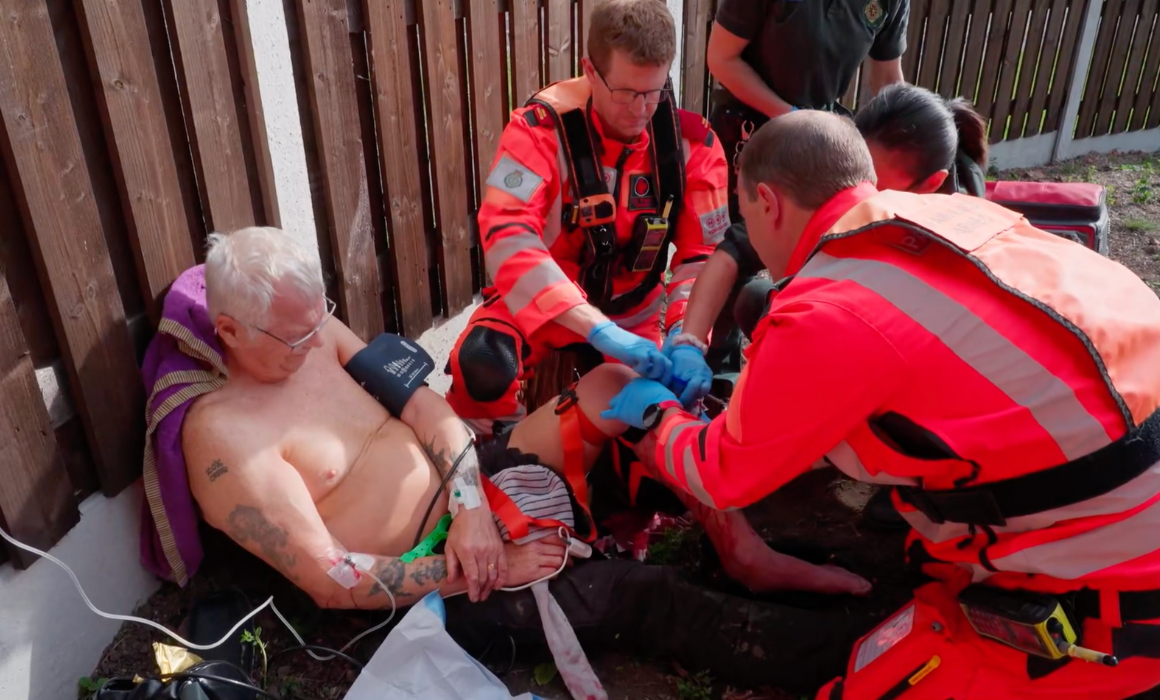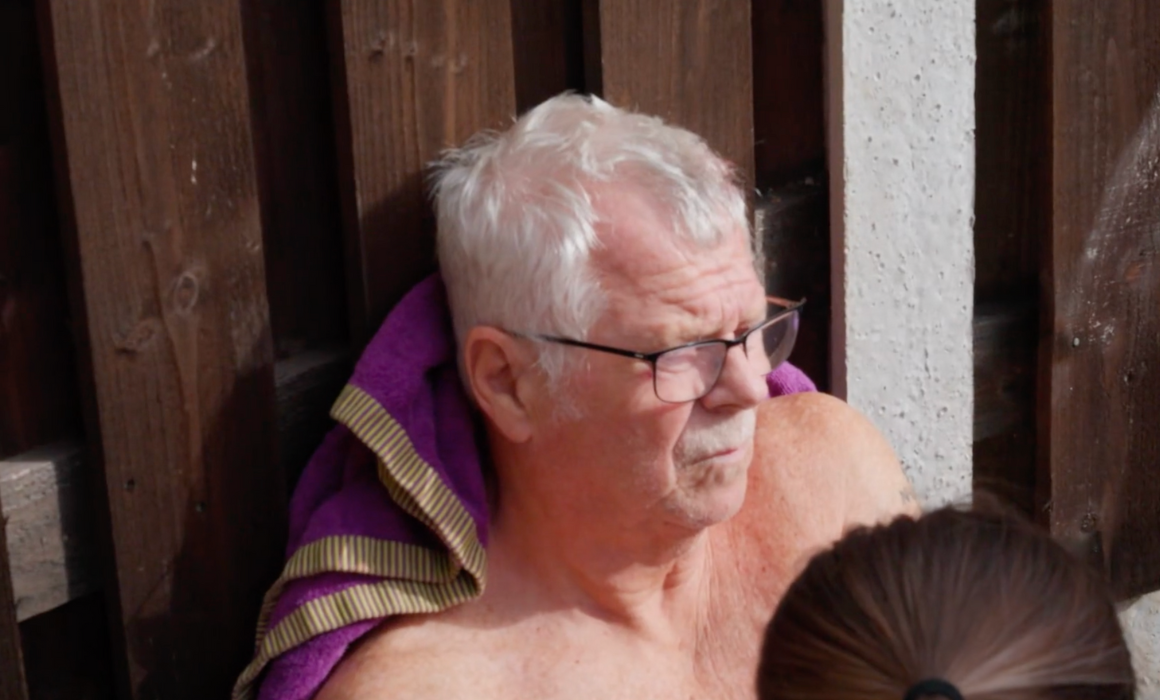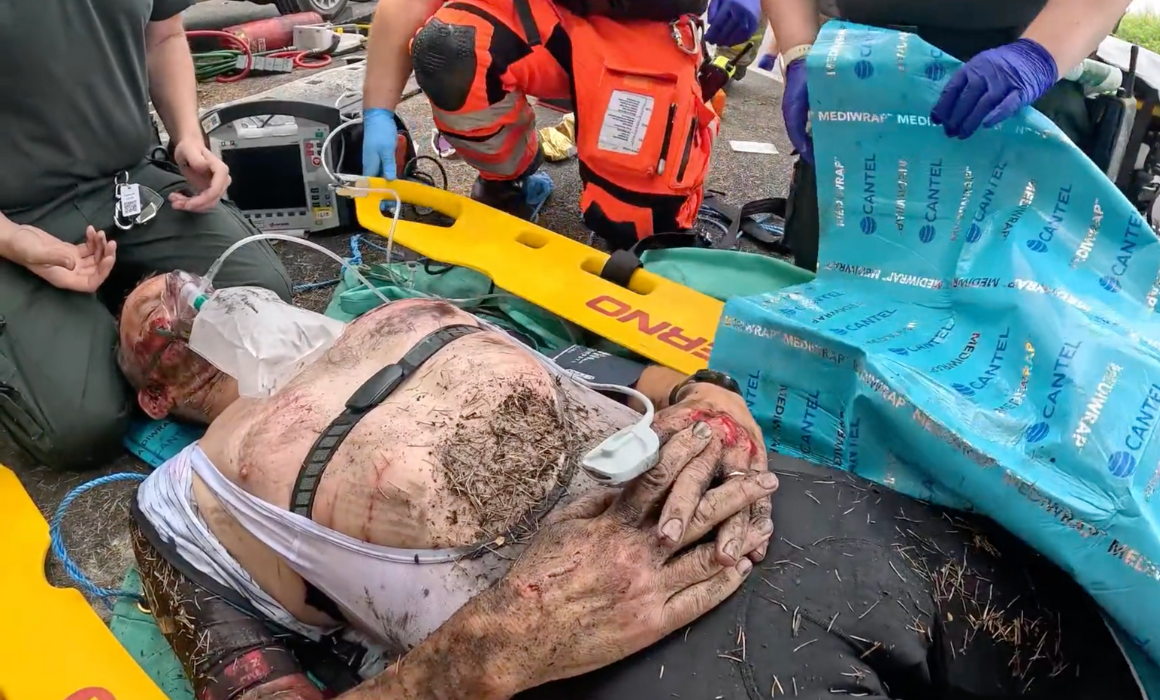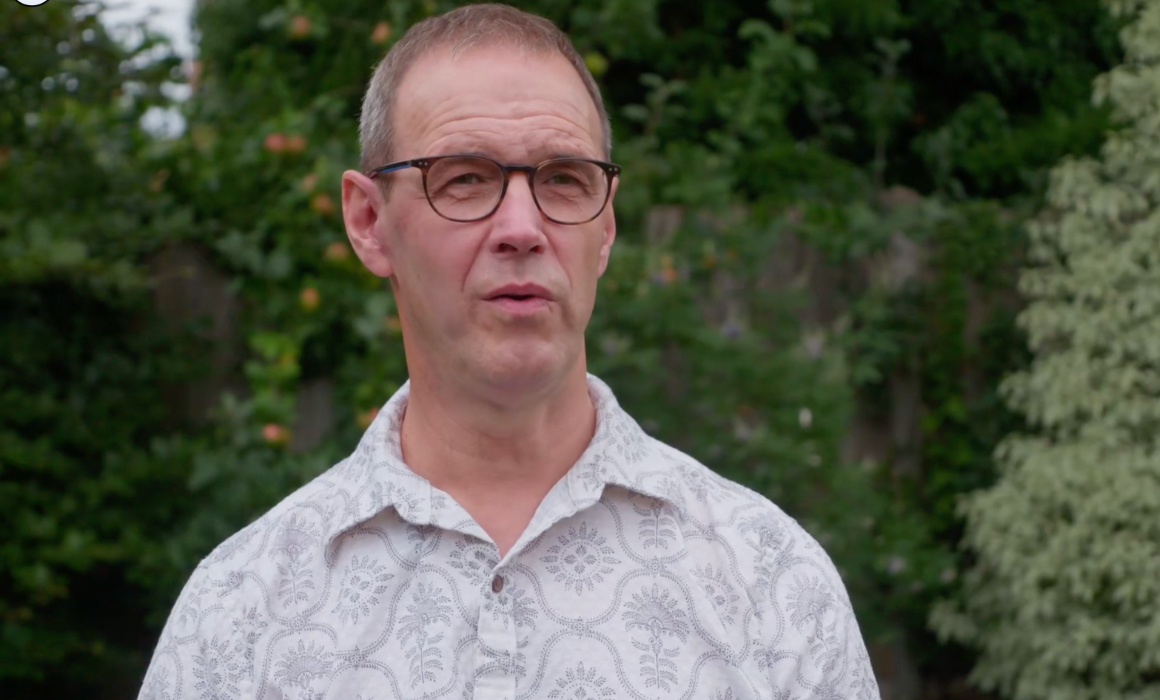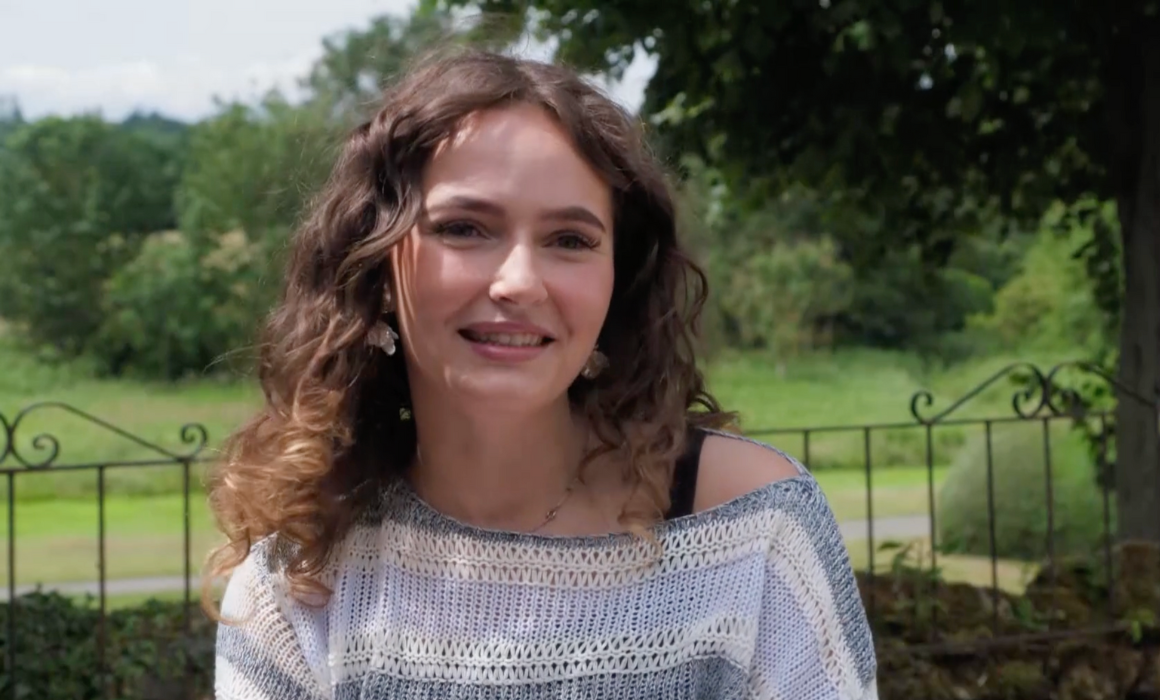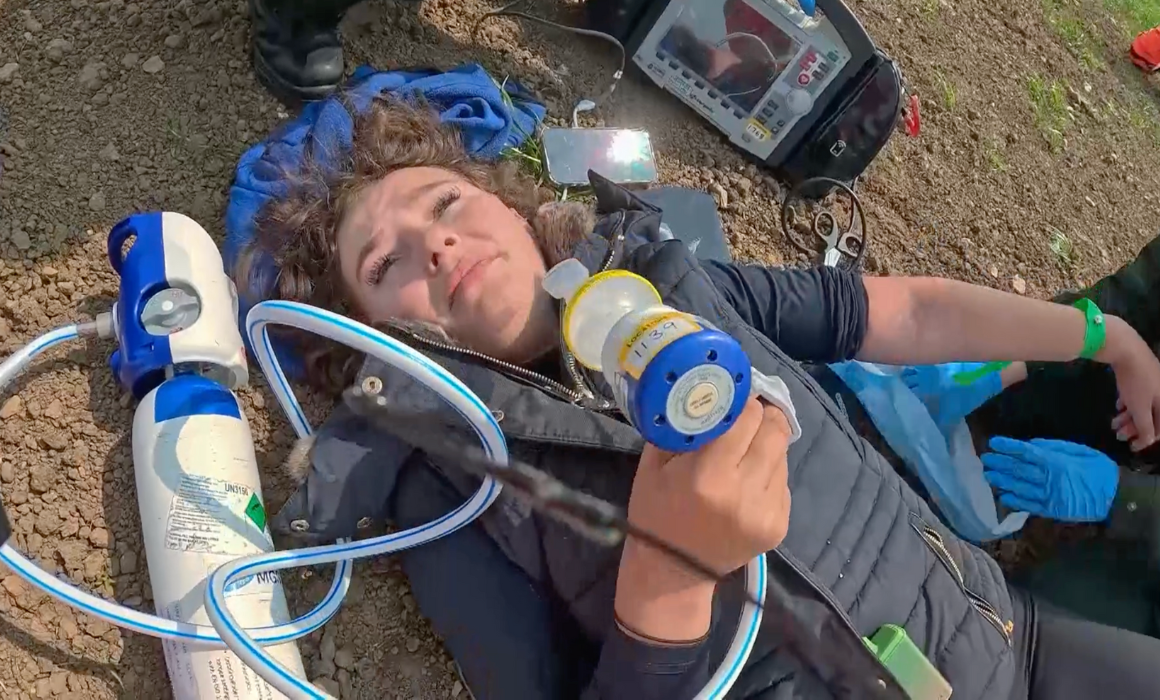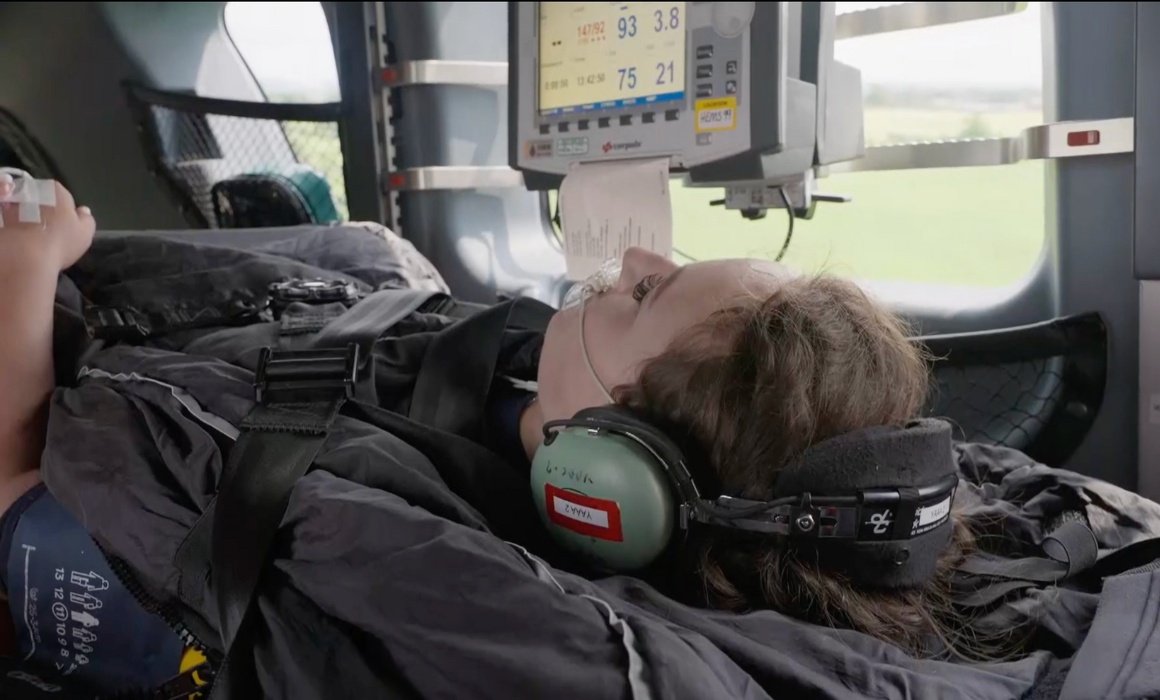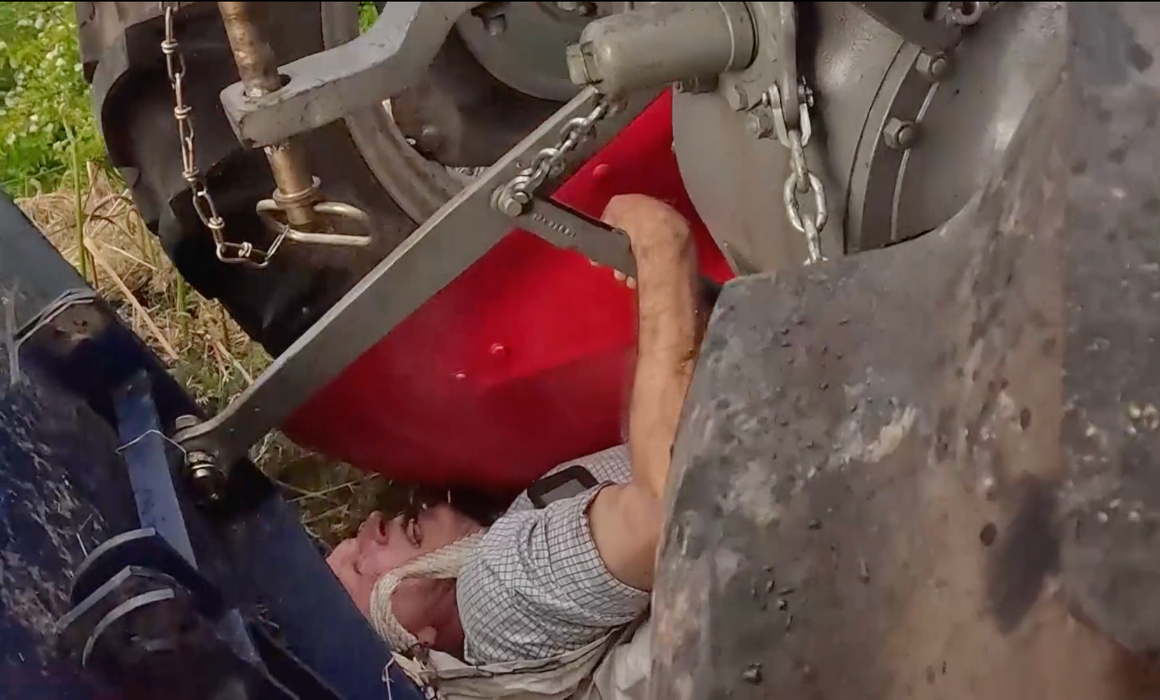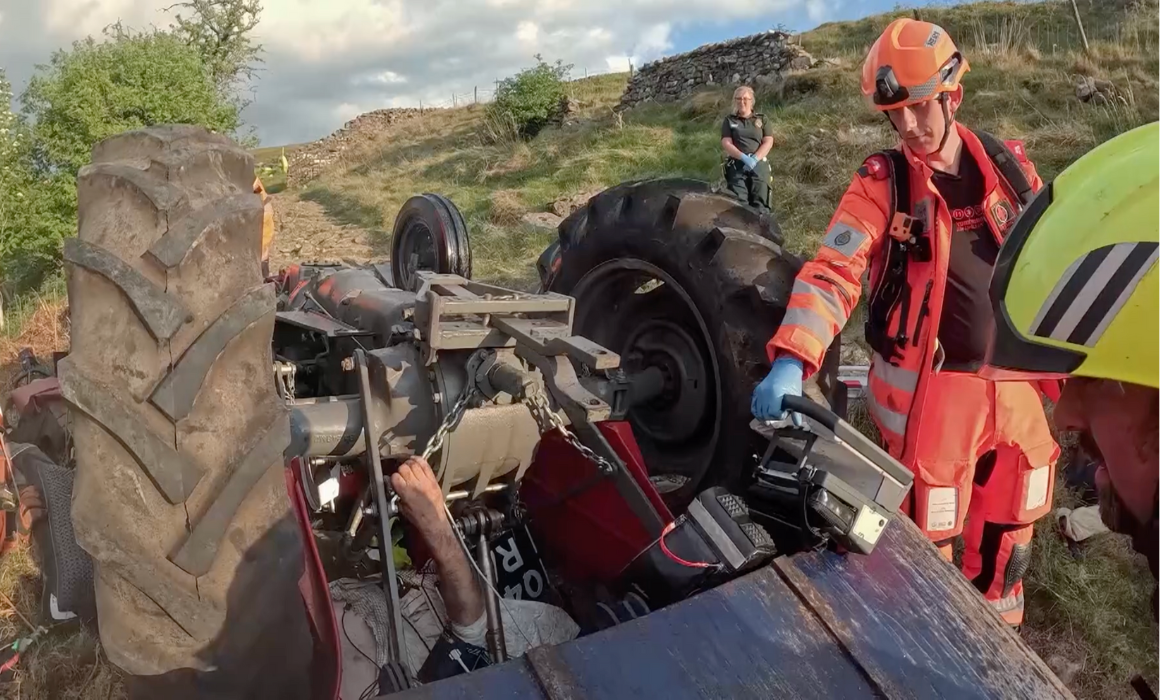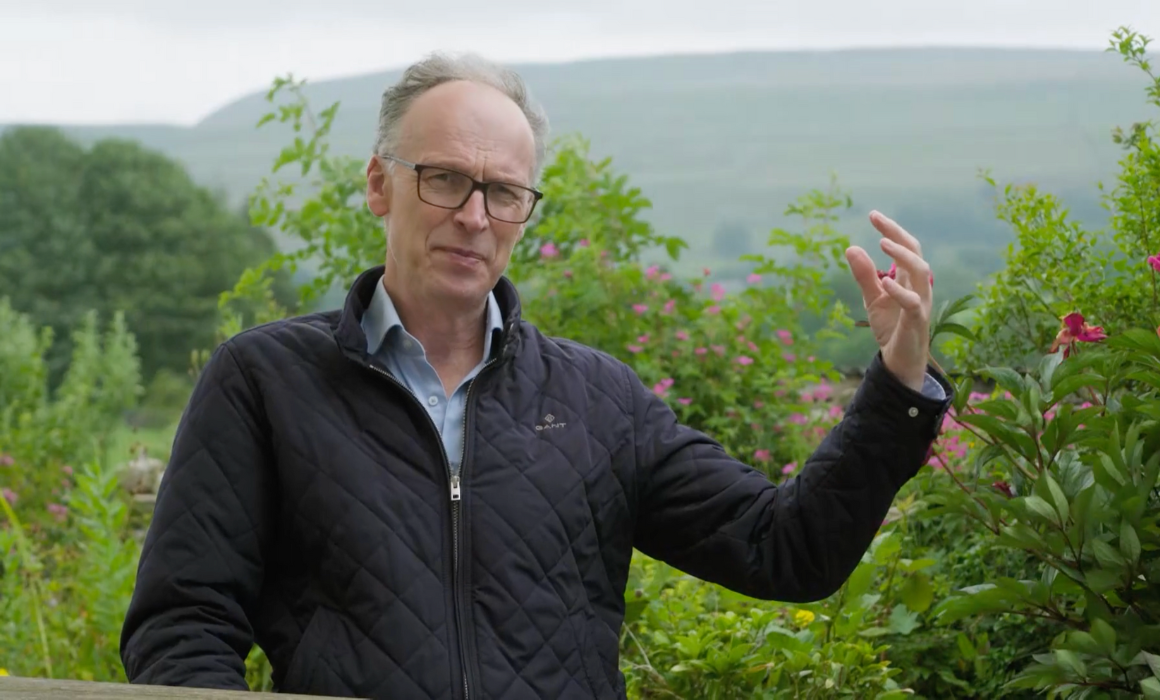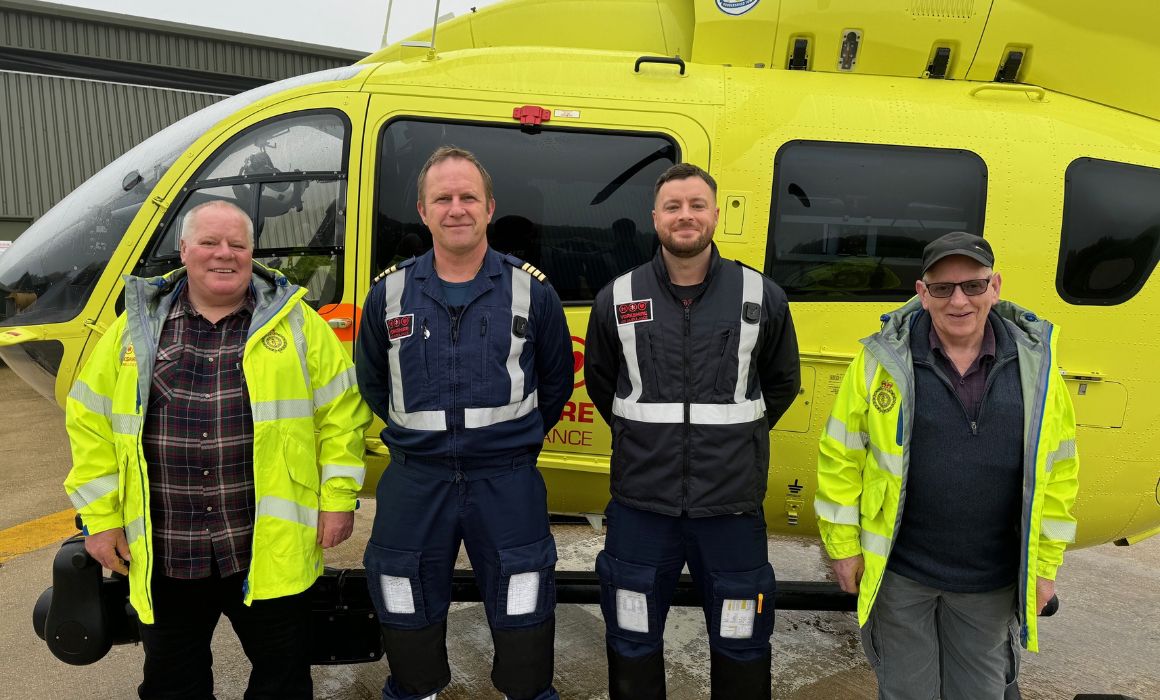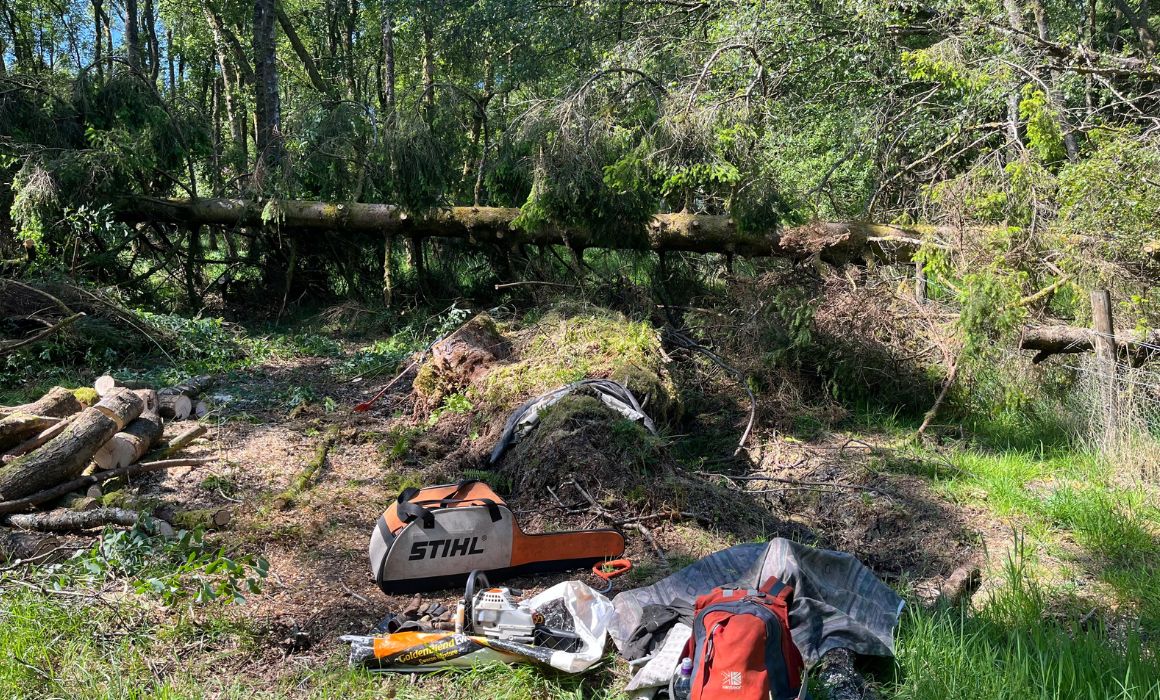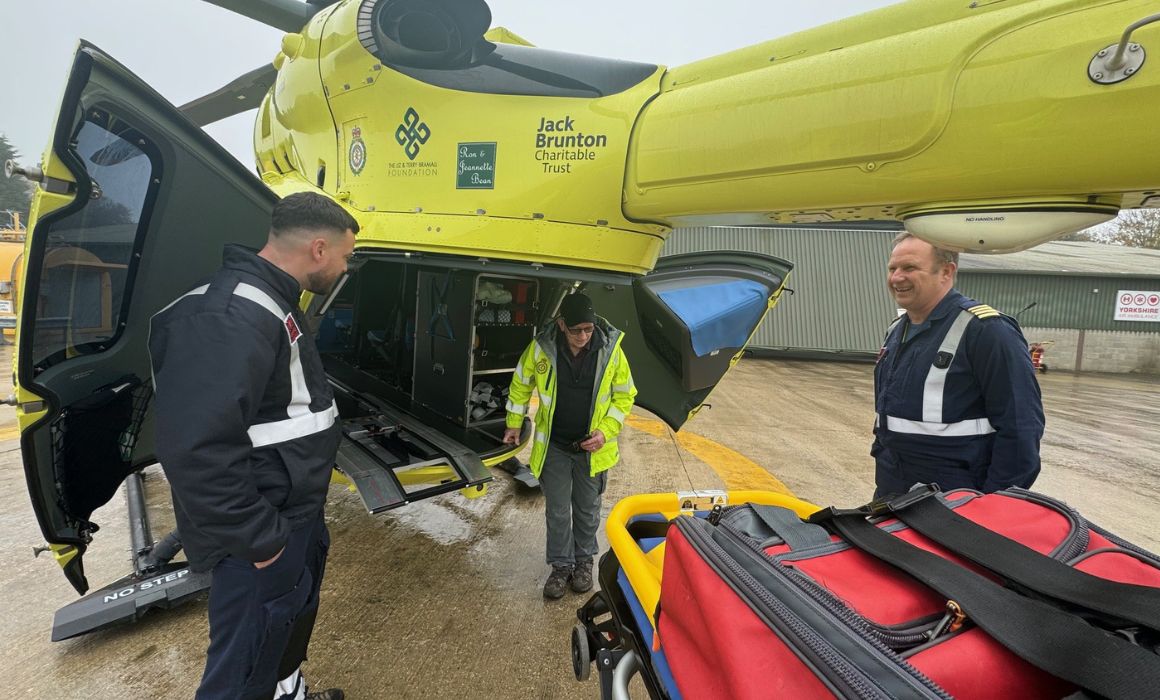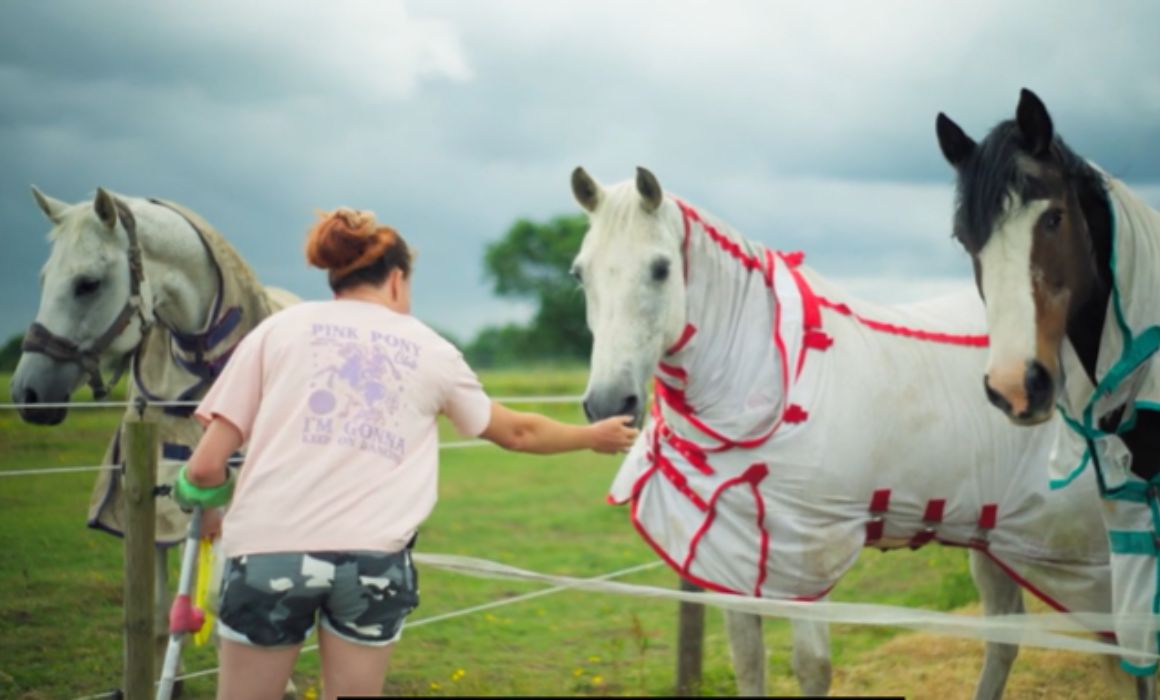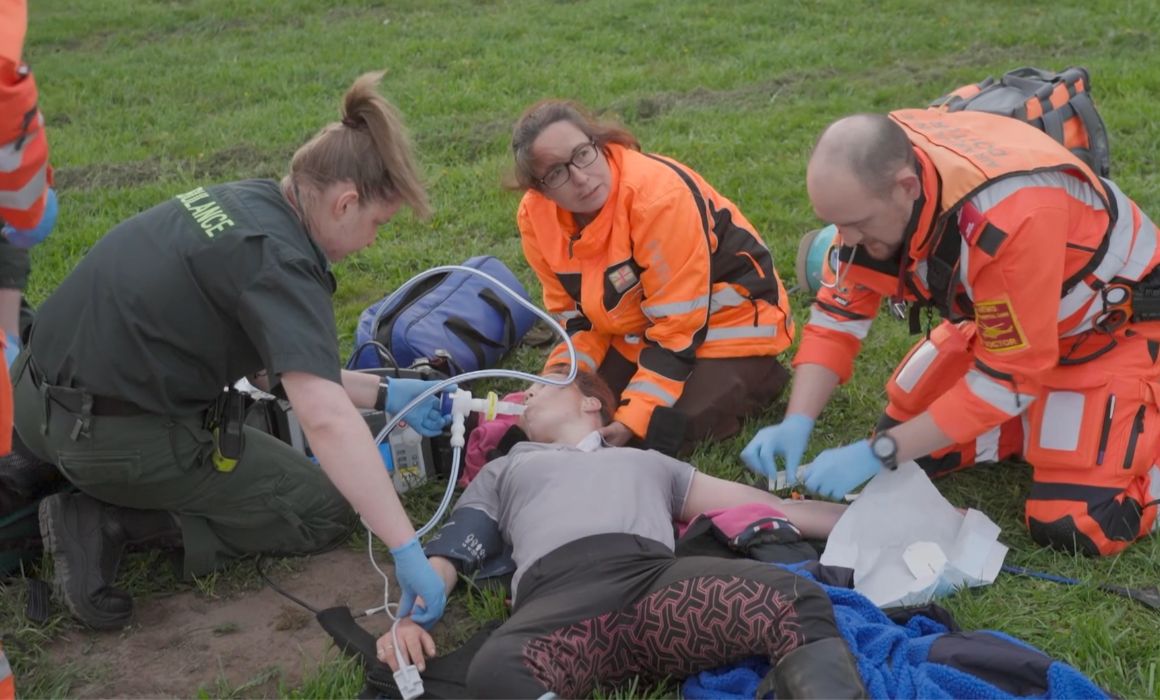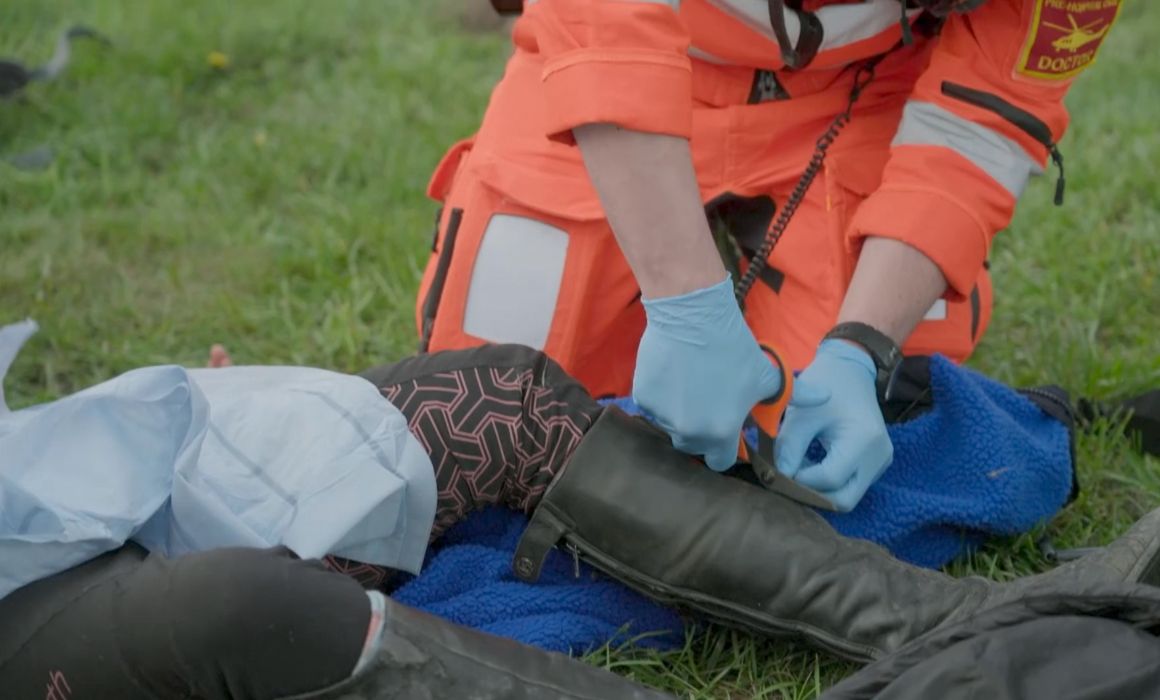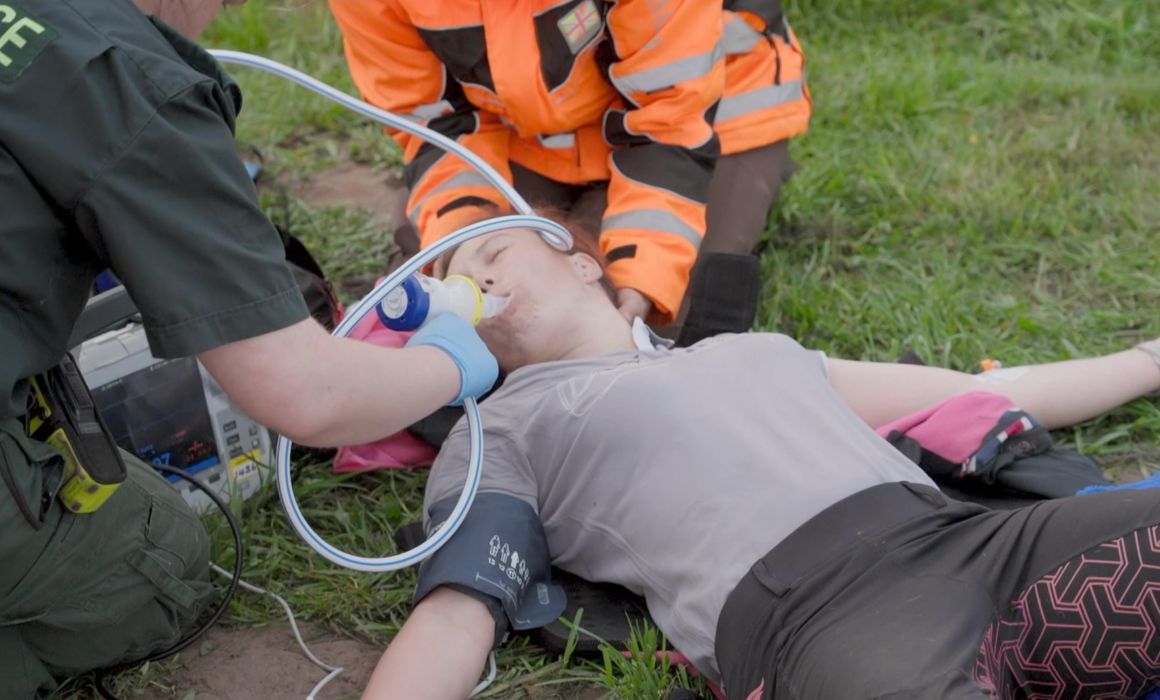The final episode of the current series of Yorkshire Air 999, airing on Really and discovery+ this Friday 21st November at 9PM, follows the Yorkshire Air Ambulance (YAA) team as they respond to a teenage mountain biker left unresponsive after a high-speed crash on a remote woodland trail.
19-year-old Caitlin Sharpe had been out riding with her dad and boyfriend when she came off her bike at around 27mph, hitting the ground face-first. With no phone signal in the area, her dad ran to a nearby farmhouse to call 999 while her boyfriend stayed with her. A land ambulance crew reached Caitlin first and, concerned by her reduced level of consciousness, requested critical care support from the YAA medical team.

Yorkshire Air Ambulance’s Topcliffe-based crew, comprised of Paramedic Stew Ashburner-McManus and Paramedic Fiona Blaylock, was dispatched to the scene, joining the land crew on a narrow trail around five miles from the nearest road.
On arrival, Fiona and Stew found Caitlin conscious but not speaking, responding only with eye opening and movement to commands. With a Glasgow Coma Scale score of 11 and clear signs of a head injury, the team carried out a focused neurological assessment to establish the extent of her symptoms.
Caitlin’s reduced responsiveness suggested she might soon struggle to maintain her airway, prompting the crew to prepare for the possibility of performing a Rapid Sequence Induction (RSI), the procedure used to place a patient into a medically induced coma to protect their brain. As an RSI can only be carried out by a doctor, they requested the doctor-led critical care team from the charity’s Nostell Air Base to attend.
While waiting for the Nostell crew to arrive, Fiona and Stew began preparing Caitlin for their arrival by moving her off the trail floor and onto a scoop stretcher, making any onward transfer or medical interventions easier. Within minutes, the Nostell crew landed nearby, and Dr James Sen and Paramedic Tom Chatwyn made their way to the scene with the help of a local groundsman, who drove them part of the way up the woodland track in his pickup truck.
After receiving a full handover, Dr James reassessed Caitlin and found her condition had improved; she was now giving short answers, and her Glasgow Coma Scale score had improved.
Dr James said, “Caitlin hadn’t been responding earlier, but by the time we arrived she was able to answer our questions. That improvement was reassuring and showed us that her brain was receiving enough oxygen, meaning we didn’t need to put her to sleep.”
Caitlin spent three days in hospital, where scans revealed multiple fractures including her jaw, nose, finger, and a T7 spinal fracture. She is now recovering at home and despite the seriousness of her injuries, Caitlin is determined to return to the sport she loves.
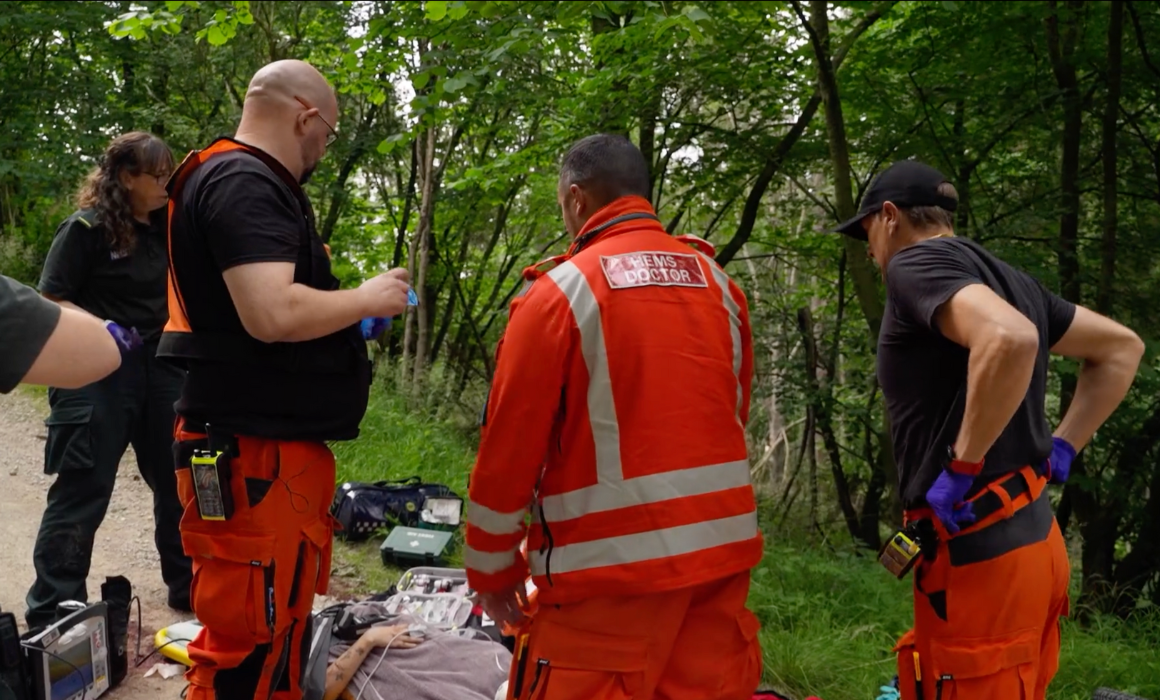
Speaking about the crash, Caitlin said, “I’ve got a fractured jaw in multiple places, a broken tooth, damage to my tongue, several small fractures in my nose and a T7 spine fracture with ligament damage. There was blood all over my helmet, inside and out, and it definitely saved my life that day. I’m doing much better now and hope to be back on my bike very soon. I’m incredibly grateful to the Yorkshire Air Ambulance crew and everyone who helped me.”

